Marine life in Aqaba, Jordan
Although Jordan is best known for its desert scenery and ruins, this Middle Eastern country is also a prime destination for scuba diving. At 26 km long, Jordan’s coastline may be short. But it makes up for its length with warm water, excellent visibility, colourful marine life, healthy corals, and striking artificial reefs. Let’s dive in and learn more about marine life in Aqaba!
The coral reef is a crucial habitat for various fish and aquatic organisms. Jordanian waters are home to more than 450 species of fish and more than 127 types of coral formation. Within the shallow waters of 0.5m to 40m, there are different types of sea grass, which are vital environments for fish. Aqaba Marine Park is managed by ASEZA; it is located south of Aqaba 15 km towards the city centre, and expanding 7km in length. The beach entrance is free of charge one can enjoy the camping facilities. And then head on to do some snorkelling, swimming, diving, and glass boat trips, as the park overlooks the beautiful coral undersea world. Visitors are asked to respect the Aqaba Marine Park`s rules and regulations to preserve aquatic life, and general safety.
With warm water temperatures, Jordan doesn’t really have a designated diving season; rather, snorkelers and scuba divers can splash throughout the entire calendar year. It’s a good idea to use a three-millimetre wetsuit in the summer (when the water can reach up to 82°F, or 28°C) and a five-millimetre wetsuit in the winter (when the water temperature hovers around 68°F, or 20°C).

Marine life in Aqaba: HAWKSBILL TURTLE
Hawksbills are named for their narrow, pointed beak. They also have a distinctive pattern of overlapping scales on their shells that form a serrated look on the edges. The hawksbill puts the distinctive beak, for which it is named to good use when munching on a clump of the reef. They also have a fondness for consuming jellyfish. Although migratory and occupying a wide range, they are often spotted on reef ledges. For the most part, they seem unconcerned by divers and provided they are given sufficient space you can enjoy lengthy encounters with them.
Hawksbills are found mainly throughout the world's tropical oceans, predominantly in coral reefs. They feed mainly on sponges by using their narrow pointed beaks to extract them from crevices on the reef, but also eat sea anemones and jellyfish. Sea turtles are the living representatives of a group of reptiles that have existed on Earth and travelled our seas for the last 100 million years. They are a fundamental link in marine ecosystems and help maintain the health of coral reefs and seagrass beds.

Marine life in Aqaba: LIONFISH
Vary in colour from reddish to tan or grey and have numerous thin, dark, vertical bars on their head and body. The common lionfish grow up to 35 cm in length and its head is angular. Lionfish are native to the Red Sea, the Indian Ocean and the Southern and Western Pacific Ocean. In these regions, we can’t talk about lionfish invasion because their natural predators (sharks, groupers, eels, cornet fish, frogfish, scorpion- and triggerfish) keep their population always in balance.
One of the best-known species is the red lionfish, an impressive fish sometimes kept by fish fanciers. It is striped with red, brown, and white and grows to about 30 cm (12 inches) long. They prey on small fish and invertebrates and are largely seen on their own but sometimes in small groups. Although fiercely territorial with other fish, they seem unbothered by the presence of divers – a good thing too as those colourful spines are full of venom.
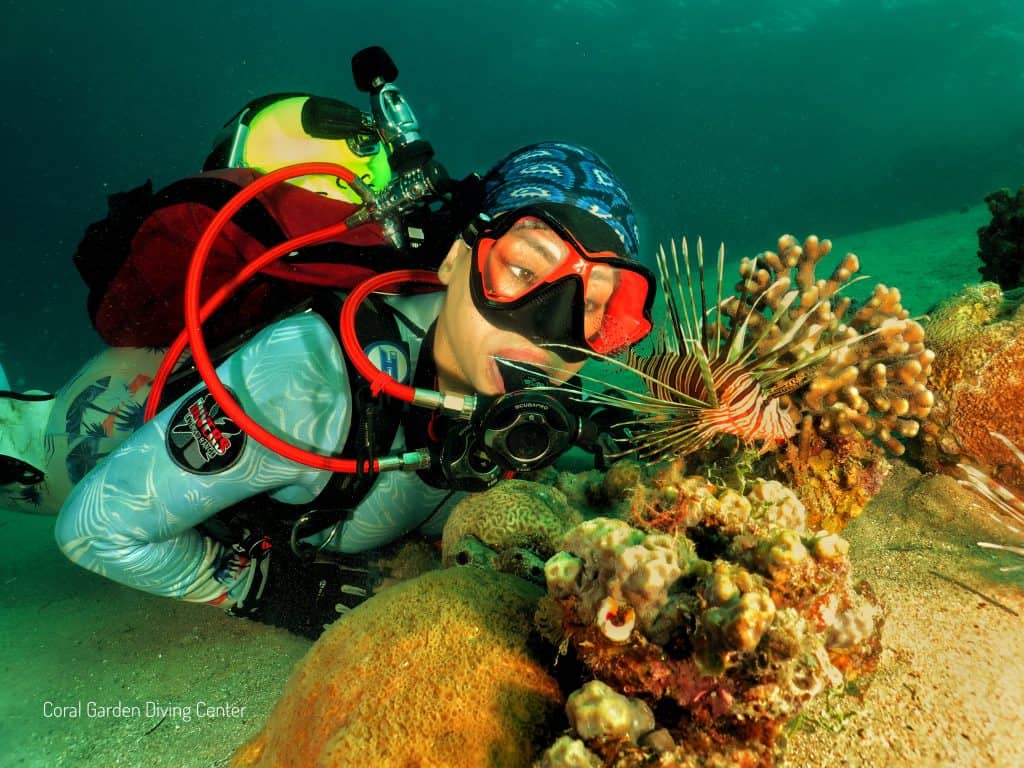
Marine life in Aqaba: NAPOLEON WRASSE
The Napoleon fish can instantly be recognized by its size, colour and shape. It is one of the largest reef fishes in the world and is the largest member of the wrasse family. They can grow up to 230 cm and weigh 190 kg. They have fleshy lips and a hump over the head that is similar to a Napoleon hat. The hump becomes more prominent with age.
Humphead wrasse spends most of their time feeding during the day. Adults are usually solitary, spending the day roaming the reef and returning to particular caves or ledges to rest at night. Napoleon fish are carnivorous and eat during the day. They can be seen feasting on shellfish, other fish, sea stars, sea urchins and crabs, crushing the shells to get at the animal within. They also crush large chunks of dead coral rubble with peg-like teeth to feed on the burrowing mussels and worms.
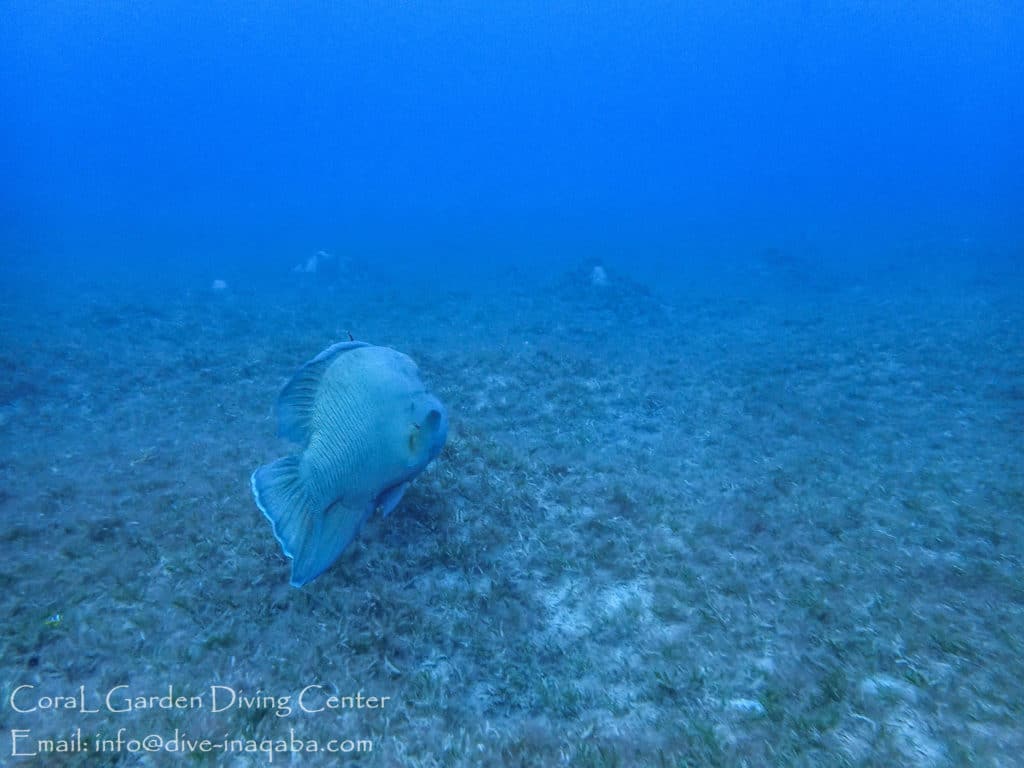
Marine life in Aqaba: FROGFISH
Frogfish are amongst my favourite critters to look for underwater. They are so well camouflaged and adapt to their immediate surroundings, that they are rarely detected. Often called grotesque, frogfish were declared “The spawn of Satan”. The complete length of the lifecycle of an individual is unknown outside of captivity. The size can range anywhere from 1/8 inch to 22 inches. As a juvenile, the Giant frogfish may be white or yellow and saddled with reddish-coloured patches, often misidentified underwater as a clown frogfish. But as the individual grows towards the sex phase the colours can shift from pink, yellow, black, beige, green and more, often sporting scab-like appendages. But all frogfish are speculated to have a chameleon-like ability with some even growing hair-like appendages.
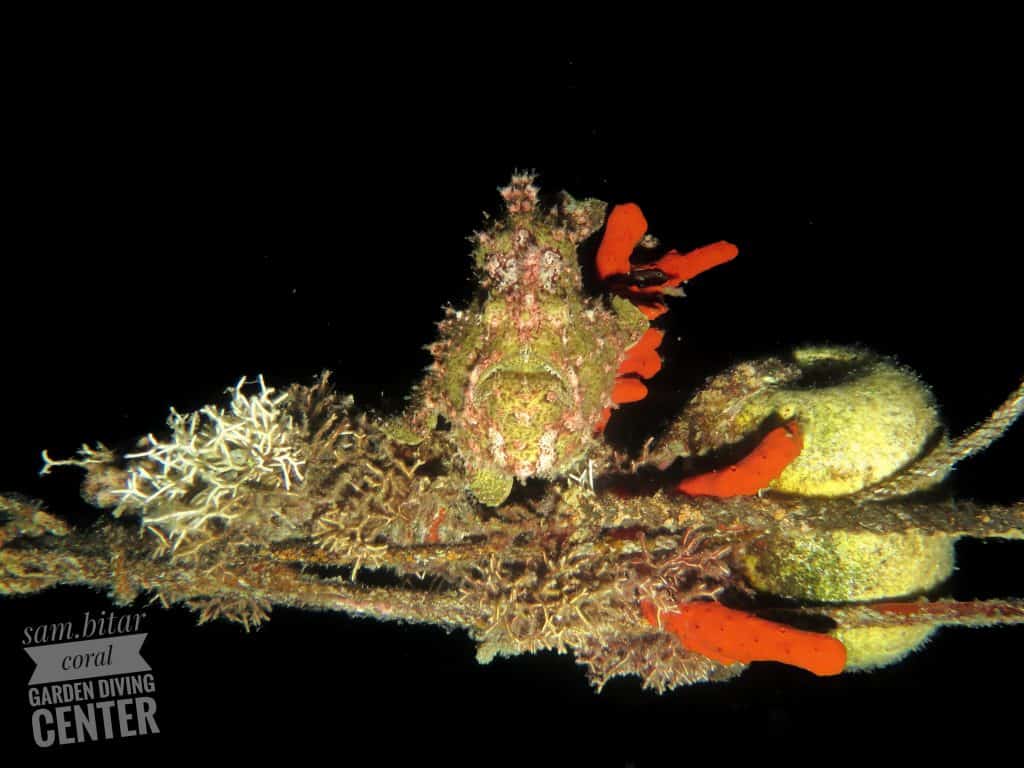
UNDULATED MORAY
Dark brown with undulating light lines and speckles: head olive green. Inhabits reef flats and lagoon and seaward reefs, 1 to at least 50 m, juveniles in tidepools. Among rubble, rocks and debris. Hunts at night for fish, octopuses and crustaceans. May be aggressive towards divers.
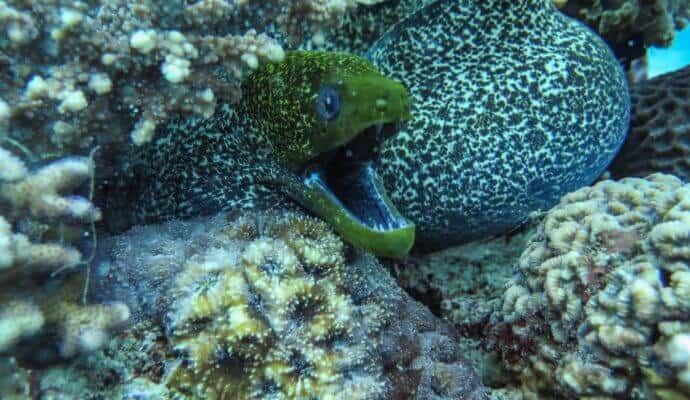
STONEFISH
Bulbous body with the vertical mouth, tiny vertical mouth, tiny eyes and large P fins. D spines are hidden beneath warty skin. Usually on sand or rubble of reef flats, lagoons and seaward reefs, 0.3 to 45 m. Often partially buried or under rocks, may stay on site for months. Feeds on small fishes and crustaceans.
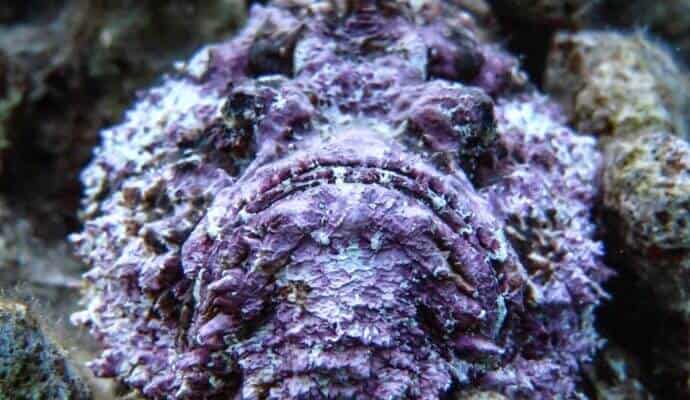
BARRACUDA
Sides often with a few scattered dark spots. Tail emarginate, dark with white tips. Inhabits estuaries, lagoons, bays and seaward reefs, 1 to 100 m. In open water above or near reefs. Juveniles are common in estuaries, often in groups. Adults are solitary. Curious but not dangerous unless provoked or attracted by shiny objects in murky water.

BANNERFISH
Pale yellow becoming white above with 2 board diagonal black bands. Anterior D Fin a long filament. Inhabits reef flats, lagoons and sheltered seaward reefs, 3 to 50 m. Common, often hovers in aggregations under coral heads or around prominent coral formations. Feeds in open water on zooplankton. Territorial, not shy. Juveniles at the base of slopes in large aggregations.
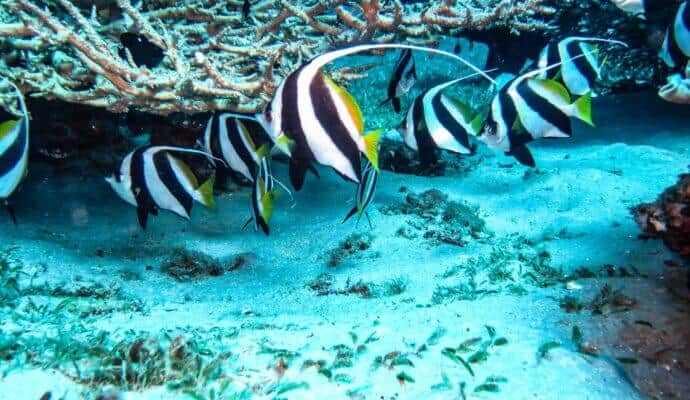
There are more than 20 amazing spots that cover Ababa’s beautiful sea life to dive and snorkel in. Learn more on our website. And let's explore marine life in Aqaba during our daily trips from the boat or shore.
